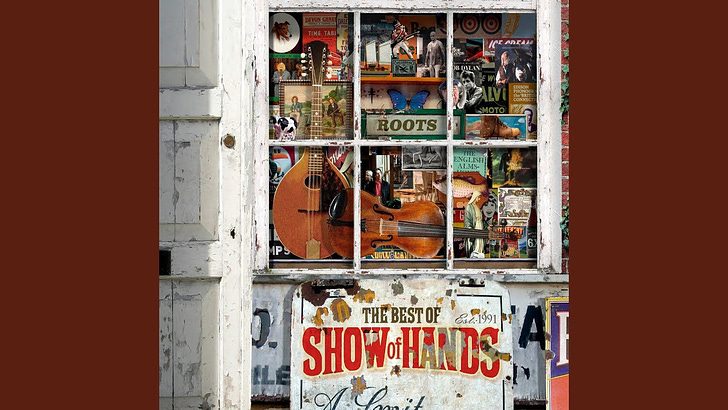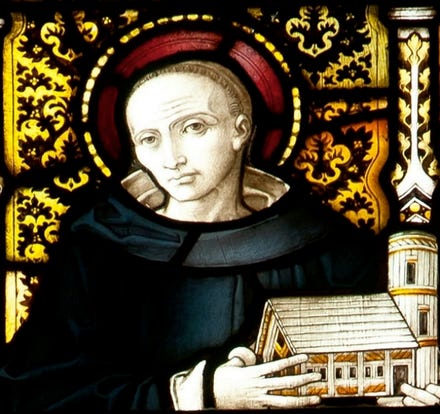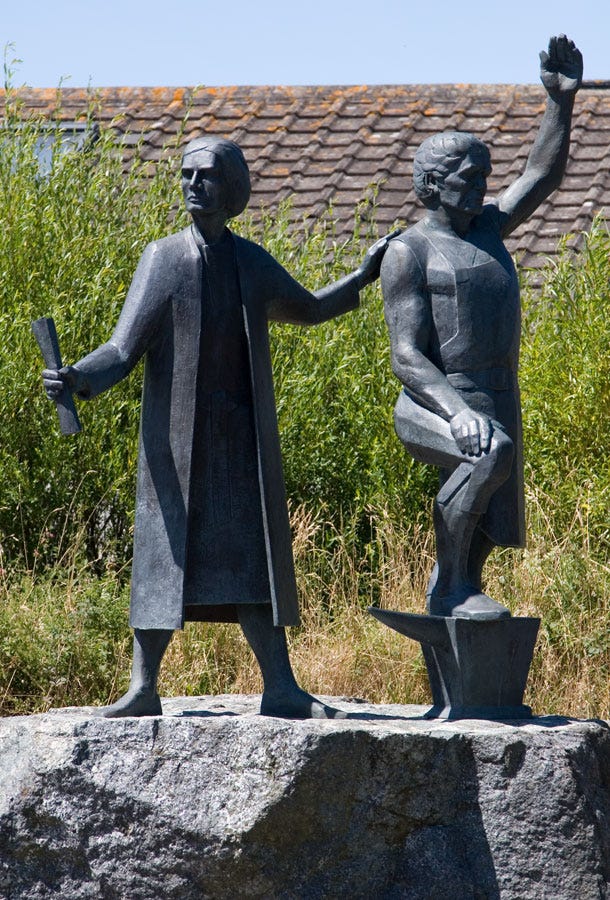At the turning point in my life, I was sitting by myself, gazing out the window on one of those typical Istanbul evenings that were cold, rainy, and quite filthy. I was thinking that I needed to make very important decisions about my life because a lot of things had changed in my life, and even though I didn't want them to, these changes were permanent.
Listening to new music and changing my musical tastes was probably the least drastic of the many new decisions I had to make in this circumstance. I didn't know much about English music, but I listened to a lot of different kinds, especially Turkish and Kurdish music.
I began doing all of my own independent, haphazard research on English music. Since I've always been drawn to things with true stories, I studied traditional, historical, and folk music with curiosity There were many beautiful songs, of course, but none of them affected me as much as Cousin Jack, a song written by Steve Knightley, a member of the band Show Of Hands, which made me deeply curious about it's.
Even though it is not a traditional song, I was unable to resist being curious when I first heard it because I recognized that each verse contained a wealth of history and experience. As a result, I began reading up on the Great Migration, Cornwell, mining, Cousin Jack, and the song. My research showed me that the story was much deeper than I thought. In the end, I learned that the people of Cornwall were not actually English, that they had a different language, that their symbolic flag had a history of about 1500 years, that the origin of the term Cousin Jack has not yet been fully proven, but according to the first references, a book called The History of Jack and the Giants was offered for sale in 1708, that approximately 310,000 people had to migrate from the early 1800s to the 1920s, and that I came across many other interesting information. I will discuss these in order.
CORNWELL REGION IS THE HOMELAND OF COUSIN JACKS
Cornwell, whose constitutional status has been contested by the Cournish Nationalist Movement, who want greater autonomy within the United Kingdom, is a region in southwestern England, bordered by the Atlantic Ocean to the north and west, Devon to the east and the English Channel to the south. The longest river in the region is the Tamar River, which forms the border with Devon. The reference to this river in the song Cousin Jack, which is the subject of this article, is as follows:
I dream of a bridge cross the Tamar,
It opens us up to the East,
And the English, they live in our houses,
The Spanish, they fish in our seas
There was a small Roman presence in Cornwall until it became part of the British kingdom of Dumnonia. There was constant conflict with the expanding Anglo Saxon kingdom of Wessex and the Britons to the south-west, and eventually the Britons were pushed west of the Tamar. From the Norman Conquest onwards, Cornwall was governed as part of England, although it retained its own culture. Cornwall, which developed its tin mining industry, was granted duchy status in 1337.
Cornish is a sub-branch of the Celtic languages of the Indo-European language family, the Southwestern Britonic languages, and is spoken by the people of Cornwall, who are seen by Cornish nationalists and Celtic political organizations as belonging to the Celtic nation. But even though this language was extinct by the end of the 18th century, Cornish nationalism is helping to bring it back to life today. The language was recognized as critically endangered by UNESCO in 2010. Nonetheless, Cornish is now recognized under the European Charter for Regional or Minority Languages, and it is frequently cited as a crucial component of Cornish tradition, identity, and culture.
Cornwall Council considers Cornwall's language, geography, Celtic identity, political history, settlement patterns, maritime tradition, industrial heritage and dissident tradition to be among the features that make up its "distinctive" culture. However, it is unclear exactly how many people living in Cornwall consider themselves Cornish; results from different surveys (including the national census) vary. In the 2001 census, 7% of people in Cornwall identified themselves as Cornish. However, activists have argued that this underestimates the true number, as there is no explicit "Cornish" option on the official census form. Later surveys have suggested that up to 44% identify as Cornish.
Cornwall is one of the poorest parts of the United Kingdom in terms of per capita GDP and average household incomes. At the same time, parts of the county, especially on the coast, have high house prices, driven up by demand from relatively wealthy retired people and second-home owners.
In the mid-19th century, however, the tin trade again fell into decline. Other primary sector industries that have declined since the 1960s include china clay production, fishing and farming.
Today, the Cornish economy depends heavily on its tourist industry, which makes up around a quarter of the economy.
CORNISH NATIONAL FLAG, SAINT PIRAN AND THE CORNISH REBELLIONS
As a nation distinct from the English, Cornwall has consistently emphasised its Cornish identity throughout history, with its rebellions against the English crown and its flag, one of its national symbols.
The flag seen in the figure above is the national flag of Cornwall. This flag was designed by Saint Piran, who believed that the tin in the black quarry stone, which was made up of an ore containing tin, rose up in the form of a white cross when melted, and became the national symbol of Cornwall. At this point, it would be useful to briefly touch on why Saint Piran was such an important figure and the stories about him.
It is assumed that Saint Piran, about whom there is almost no definitive information, was Irish. However, many scientific studies claim that Saint Piran's life is an exact copy of the life of the Irish Saint Ciarán of Saigir, and only his name was changed. It is believed that Saint Piran was exiled from Ireland because he carried out Christian activities very strongly in Ireland.
Because of St. Piran's religious activities the Irish tied him to a millstone and threw him into the sea, but he miraculously survived and reached the coast of Cornwall at Perranzabuloe, where he founded an oratory and continued his evangelistic work, and his first disciples were a badger, a fox and a bear, who represent an important part of the legend of St. Piran. Many Christian disciples joined St. Piran at Perranzabuloe and Lanpiran Abbey was founded there, with him as abbot.
Although tin smelting had been done since the arrival of the Romans, it is said that many of the methods were forgotten and Saint Piran rediscovered them. Perhaps because someone as spiritually esteemed as Saint Piran is associated with mining, Cornwall produces some of the best miners in the world.
It is reported that Saint Piran was executed by the King of Cornwall, Theodoric or Tador, in 480. March 5 is celebrated as Saint Piran Day.
Cornwall has created the foundation of its distinct identity today not only with its saints but also with the rebellions it has carried out in history. There are two important Cornwall rebellions in history.
1. Cornwall Rebellion
King Henry VII's decision to increase taxes to finance his campaign against Scotland, immediately after the abolition of all regulations regarding the legality of tin mining in Cornwall, paved the way for the people of Cornwall, who were already in financial difficulties, to rebel against the king.
In response to King Henry's imposition of taxes, Michael Joseph (An Gof), a blacksmith from St. Keverne, and Thomas Flamank, a lawyer from Bodmin, incited most of the people of Cornwall to armed rebellion.
An Gof and Flamank were executed at Tyburn on 27 June 1497. An Gof is recorded as having said before his death (while tied to a hurdle which dragged him towards the place of execution) that he should have "an eternal name and a lasting and immortal fame".
In 1997, a commemorative walk called Keskerdh Kernow (Cornish: "Cornwall continues the march") retraced the original route of the rebellion from St. Keverne to Blackheath in London to celebrate the 500th anniversary of the Cornish Rebellion. A statue depicting Cornwall leaders "Michael An Gof" and Thomas Flamank was unveiled in An Gof's home village of St. Keverne.
2.Cornwall Rebellion
The Second Cornwall Rebellion was the result of an attempt by Perkin Warbeck, a candidate for the English throne, to exploit the unrest in Cornwall that began in the same year as the First Cornwall Rebellion for his own cause. This rebellion also failed.
Up until this part of the article, I have explained the history and people of Cornwall in the shortest possible way. Below, I will summarize some of my research on the great migration of the people of Cornwall and the origin of the name "Cousin Jack" in the song Cousin Jack, which inspired this article.
THE GREAT MIGRATION AND THE TERM COUSIN JACK
It is known that between 1815 and 1920, according to some claims, 250,000 and according to some other claims, 310,000 people emigrated from Cornwall to different parts of the world. The places that received immigration were the United States, Canada, Mexico, Panama, Colombia, Peru, Chile, Argentina, Brazil, South Africa, Australia, New Zealand, and the Samoas, including the United Kingdom.
The economic downturn that affected farmers after the Napoleonic Wars encouraged many Methodist Cornish people, who did not want to pay taxes to the Church of England, to emigrate to the USA and Canada.
The mining opportunities in many South American countries that gained their independence from Spain and Portugal between 1815 and 1830 encouraged the Cornish people, who were the best in the world in this business, to migrate to South American countries.
Due to the starvation that took place in 1840, the poor people in Ireland, some parts of Scotland and Cornwall were in a very difficult situation. The fact that England did not care enough about this situation was one of the reasons that encouraged the Cornish people to emigrate in search of a better life.
The discovery of gold in California in 1848 caused the Cornish people, who had also emigrated to other parts of the world between 1848 and 1858, to flock to the United States.
The discovery of large amounts of copper in South Australia in 1859 and discoveries elsewhere in the world greatly reduced the price of copper, and the copper mines in Cornwall closed in 1866. The same thing happened to the tin mines in 1870. This closure of the mines forced the Cornish people to emigrate, especially to Australia and the USA.
When gold and diamond mines in South Africa began to open in the late 1800s, South Africa became another important place for Cornish people to migrate to. However, few settled there permanently. As the development of the steam engine made overseas travel by steamboat faster and safer, many people only left Cornwall during the working season, returning to Cornwall at the end of the season.
While they were overseas, the Cornish miners sent money back to their families. By the end of the 1800s, around £1 million was being sent back to Cornwall from South Africa every year.
The impact of the Cornish people on the places they migrated to would be the subject of an article in itself, so I will not touch on this subject in this article.
The main reasons for this great migration of Cornish people were economic fragility, mine closures, unemployment and the search for a better life. As a result of this great migration, the world was introduced to the term Cousin Jack.
There are many studies on where the name Cousin Jack, which is the subject of many songs and studies, comes from, but it cannot be said that researchers have a consensus. While this is the case for the origin of the term Cousin Jack, the information on how it spread is quite clear. It is accepted that the term cousin jack became widespread when the Cornish people who worked in the mines where they migrated told the mine owners that their cousin jack was also a miner and that if they needed workers in the mines, cousin jack could come and work. So why were all their cousins named Jack?
Why is the name Jack so commonly used?
The term Cousin Jan, which is frequently found in many Cornish newspaper articles from the 1860s to the 1890s, is used as a general name or to describe Cornish miners in general. However, it is not clear exactly when and where the term Cousin Jack was first used to refer to Cornish immigrants.
In Margaret Ann Courtney’s book West Cornwall Words, there are statements that the expression ‘Cousin Jacky’ is used together with Cousin Jan as a local dialect concept meaning ‘stupid person, coward’.
A report in The Cornish Telegraph dated 27 September 1854 briefly described the funeral of a miner who had fallen into the Pednandrea Mine shaft in Redruth, and noted that 4,000 people, half the population of Redruth, attended the funeral that day. An interesting detail in this report is that although the miner's name was John Stephens, he was better known as Cousin Jack Cobbler in life.
It would be incorrect to say that the term Cousin Jack was used only for the people of Cornwall overseas. The Oxford English Dictionary notes under Jack, that 'Jack' was generally used in English as a term 'for any representative of the common people' or for any 'lad, fellow, chap; esp. a low-bred or ill-mannered fellow' back to at least the sixteenth century.
The earliest record of a book of fairy tales being sold is from 1708, called The History of Jack and the Giants. The book, which was incredibly popular at the time, tells of a wealthy farmer near Cornwall during the reign of King Arthur who had a son known as Jack the Giant Killer. Jack's first enemy was a giant named Cormillan, who lived on St Michael's Mount, and Jack trapped and killed him. Saint Michael's Mount is referenced in the song Cousin Jack, which inspired this article:
When John Wesley gave us a voice,
Did Joseph once come to St Michael’s Mount?
I couldn't find this book no matter how hard I tried, but my research led me to compare it to a movie called Jack The Giant Slayer. Although the 2013 movie directed by Bryan Singer and starring Nicholas Hoult and Eleanor Tomlinson tells the story of a war with giants, I can't say I can make a very close connection between the book and the movie.
In conclusion, it is understood that the claims that the nickname Cousin Jack emerged overseas after the great migration described above are not true. It is clear that the term was used in Britain and even earlier. Although this nickname initially had a mocking connotation, perhaps the image of the name became more acceptable and cheerful with Jack the Giant Slayer. However, it is clear that the nickname Cousin Jack was reclaimed and adopted by the participants of the great migration and used to express their otherness, and has gained a great image in today's terms and has become the subject of many books, songs and even studies.
I have no idea why a song that I came across randomly and has nothing to do with me affected me so much. However, the story that drew me in as I researched the background of the song is inspiring in terms of revealing the sadness that the human being, from the individual to the society, actually feels.
Because this song contains a deep story and migration. Birth, which is the first moment a human being gains an identity, is actually a migration from the womb, and similarly, death, in which a human being loses his/her identity, is a migration from this world. A few decades called life, in which wars, inventions, work, love, hate and in fact everything that occupies a human being take place with incredible intensity, is actually nothing more than a feature-length film squeezed between two migrations, the ending of which no one knows. After all, isn't what we need to understand that every migration is a person and every person is a migration? Because migration is not just a movement of a person from one point to another, but also a movement of language, tradition and culture along with a person.
Isn't the song Cousin Jack a work of art that includes the name Jack, the origin and reason for its widespread use not yet fully proven, the fact that it is used to describe the best miners in the world, Saint Piran, what the mines of Cornwall mean to the Jacks, the Cornish language that was first forgotten and then tried to be revived, and many more?
This land is barren and broken,
Scarred like the face of the moon,
Our tongue is no longer spoken,
And the towns around us face ruin,
I must state that it is not possible for me to write about this subject in a shorter way.
I shared the link to the song that inspired me at the top of the article, but if you've read this far, I'm happy to share with you the link to the song Where's Cousin Jack, which was written by Jim Wearne more than ten years ago but is not known to many people except for a few curious people like me.
I am happy to share my first article on this platform with you. The interest you will show in this article will increase my motivation to improve myself and offer you many quality content. For this reason, your likes, comments and all your interactions are very important to me. See you in the next article.
References:
https://www.thecountrymen.co.uk/music/cousin-jack-lyrics/
https://cornishnationalmusicarchive.co.uk/content/wheres-cousin-jack/
https://www.cornwallforever.co.uk/history/1815-1920-the-great-emigration
https://www.caitlingreen.org/2021/01/cousin-jack-origins.html#:~:text=The%20Cornishman%2C%20or%20%22cousin%20Jack,of%20Cornwall%2C%20England…
https://stivestowncouncil-cornwall.gov.uk/civic_events/st-pirans-day/#:~:text=St%20Piran's%20Day%20(Cornish%3A%20Gool,the%20national%20day%20of%20Cornwall.
https://www.flaginstitute.org/wp/flags/cornwall-flag/
https://www.cornwalls.co.uk/history/people/michael_joseph.htm
https://www.historic-uk.com/HistoryUK/HistoryofEngland/Cornish-Rebellion-1497/
https://bernarddeacon.com/demography/the-great-emigration/







